What Is The Name Of The Animal That Looks Like A Leaf
With a planet full of various animals, it's no surprise that they come in all shapes and sizes. Some animals survive solely based upon appearing to be threatening while others mimic poisonous species to fool predators. At that place are even predators that have developed appearances to lure prey to their eventual doom. These 10 amazing animals look just similar plants, and you lot'll exist amazed at their reasons for doing so.
#ten Animals That Await Like Plants: Satanic Foliage-tailed Gecko

Jiri Balek/Shutterstock.com
The final place on our list is held by probably the most threatening in advent at least when taken out of the environs the camouflage is designed for. The satanic foliage-tailed gecko (Uroplatus phantasticus) is fully committed to its constitute costume. This reptile non only has a tail shaped similar a foliage, only it also has horned eyebrow ridges that await like branches and ridges down its body like leafage veins. This specific species too steps its game up when compared to other leaf-tailed geckos throughout the world; their coloring in the cherry-red, orange, and brown range makes them appear like a dead leaf, and so even herbivores don't mistake them for a possible meal.
This gecko's primary purpose for institute mimicry is cocky-defense, and concealment isn't the only defence machinery the satanic leaf-tailed gecko relies on. When threatened, they will occasionally permit out a tremendous scream given their minor size in an attempt to frighten off predators. Found only in the rainforests of Madagascar, the satanic leaf-tailed gecko is yet another unique species native to that island nation.
With the abundance of flora around the states, some animals have adjusted to utilize it for many purposes. Whether to hibernate from predator or prey or merely as an unintentional occurrence, these 10 animals that look like plants account for representatives across many unlike types of animals. Researchers continue to detect new species even today, and without a doubt, different animals that look like plants volition exist found.
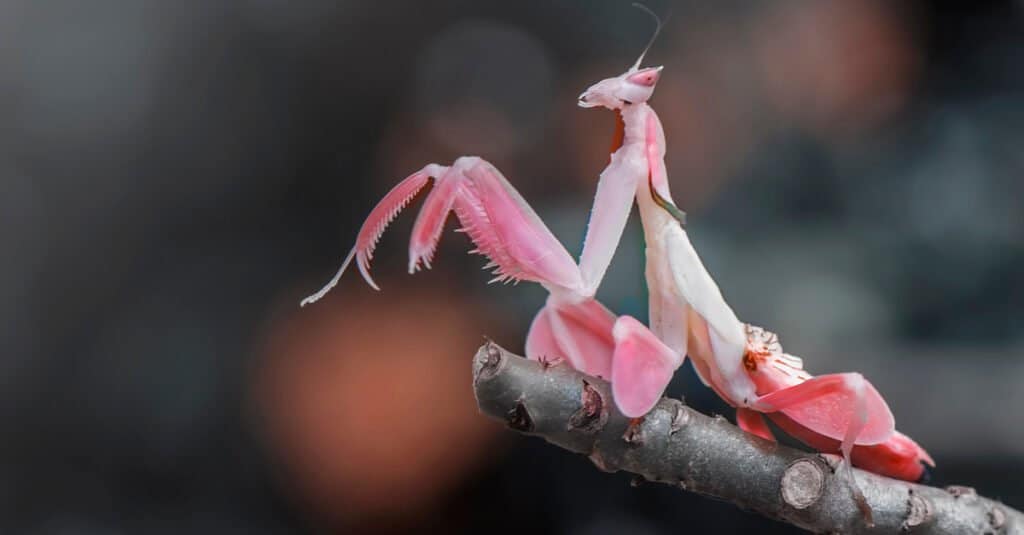
Galuh M/Shutterstock.com
The orchid mantis (Hymenopus coronatus) is some other tricky predator on our list that uses cute camouflage to capture its meals. Native to Southeast Asian rainforests, this mantis perches on branches and flowers to lure unsuspecting insects into their grasp. Non only does the coloring of this species mimic the flowers they are named after, but their legs are really formed into the shape of orchid petals also.
The orchid mantis is not categorized by the IUCN in any category; however, they are so rare that information technology was only recently discovered that they actively use their appearance to draw in prey every bit opposed to simply hiding from them. Originally discovered in the 1800s, their remote habitat makes research exceedingly difficult.
#8 Animals That Look Like Plants: Walking Stick
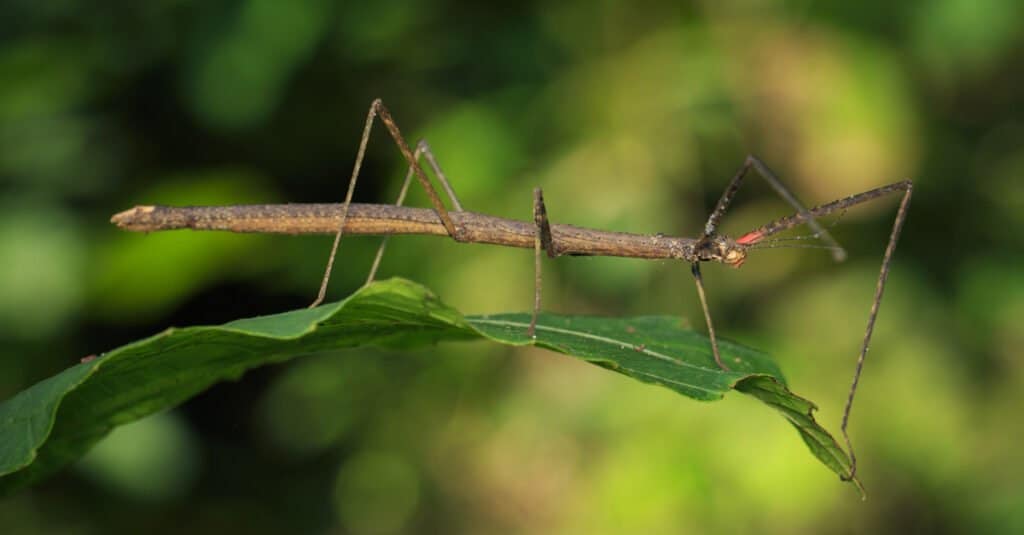
yod 67/Shutterstock.com
Walking sticks of the lodge Phasmida account for over three,000 dissimilar species of insect. Found everywhere except Antarctica, these bugs survive by trying to hibernate from their predators in plain sight. Walking sticks don't just expect like a stick, some species really sway back and forth to mimic a branch in the breeze, but this doesn't work on all predators. Bats that chase with echolocation are non fooled by these tricks.
#vii Animals That Expect Like Plants: Coral
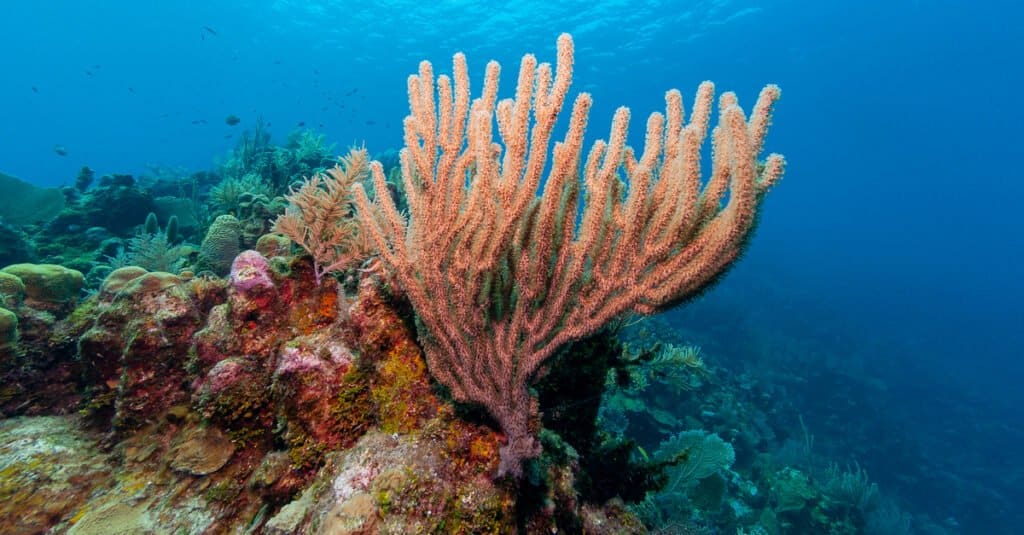
Coral reefs are composed of hundreds to hundreds of thousands of individual animals called polyps. These small organisms have only one opening into their trunk surrounded by tentacles. These tentacles have nematocysts on them that allow the coral to sting and kill their casualty which can be anything from microscopic plankton up to minor fish depending on the size of the polyp. They swallow their meal and so excrete whatsoever waste dorsum out through their mouths. The hard coral that nigh people recollect of is found in shallow waters, but that is only i species. Other species are soft or can be plant in deep h2o.
#6 Animals That Wait Like Plants: Star-nosed Mole
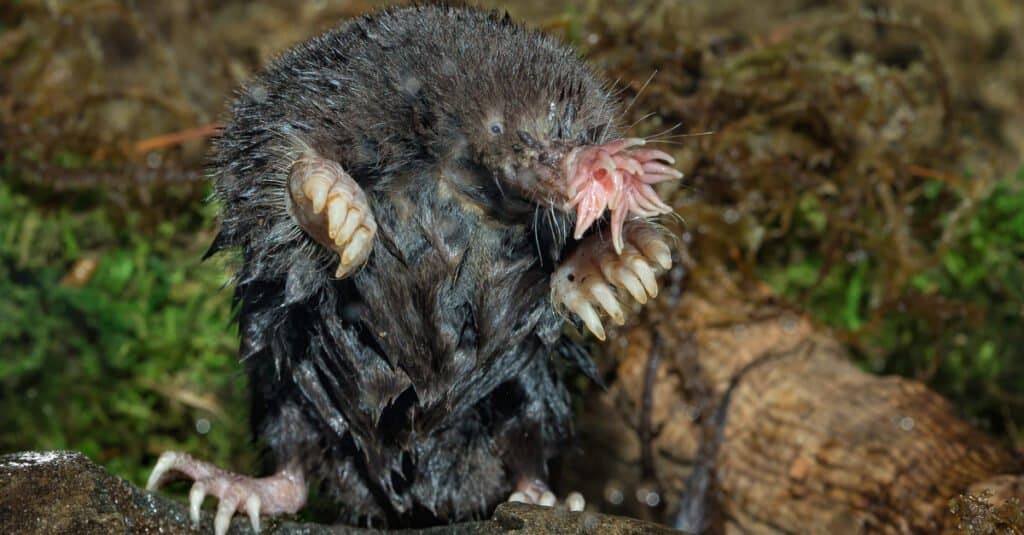
Star-nosed moles (Condylura cristata) are the only species of mole that live in swamps and marshes, and they are a veritable treasure trove of interesting abilities. When viewed head-on, the star-shaped olfactory organ that is the inspiration for their name gives off the appearance of a strange flower. This mole'south nose is comprised of 22 tendrils called rays, and this is much more than than just an olfactory organ. Star-nosed moles have terrible eyesight and navigate their underground earth primarily by touch. They touch their olfactory organ against the ground upwards of x times per 2d and receive detailed information about their surroundings. This allows them to find the insects they feed on, and they consume them within an astonishing time of 0.25 seconds which is the fastest in the globe.
Star-nosed moles spend the most time above ground compared to any other species of mole, and they don't hibernate at all. These moles burrow deeper into the ground to gainsay the colder winter temperatures, but biologists are not certain how they can avoid damage to their sensitive noses in farthermost cold. Furthermore, these moles are the only known mammal that can smell underwater. They perform this feat by blowing out air bubbles from their nose and sucking them back in.
#5 Animals That Look Like Plants: Flower Lid Jelly

feathercollector/Shutterstock.com
The flower chapeau jelly (Olindias formosus) is our next ocean-dwelling invertebrate with striking plant characteristics. Unlike any of the other rankings on this listing, the flower hat jelly looks less like a plant directly and more like a fancy hat covered in plants. This jellyfish is likewise unique among other jellies in that it spends a fair amount of time just sitting on the ocean floor.
The flower chapeau jelly has the traditional bell shape, only it also has tentacles of varying length and color some of which information technology curls up towards and into the acme of the bong. This gives information technology the flower hat appearance that it is named after. These curled tentacles tin quickly be unfurled to capture prey. Given their bottom-abode tendencies, these floating tentacles also assistance them to blend in with the kelp and seagrass that they spend a large amount of time near.
#4 Animals That Look Like Plants: Sea Cucumber
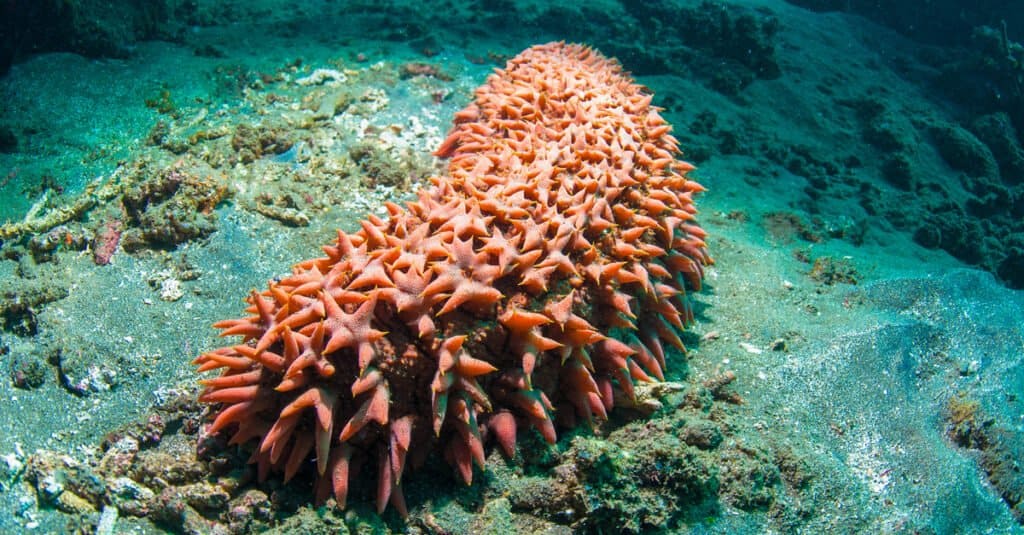
e2dan/Shutterstock.com
Back underwater for our side by side establish-like animal, we take the common sea cucumbers of the class Holothuroidea. Species in this class can vary greatly in size from less than 1 inch to over 6 feet long, and they look exactly like lumpy cucumbers. Using tubular feet for both locomotion and feeding, these marine invertebrates move along the seafloor and consume algae or whatever other invertebrate species that wanders too close. Those feet are used to push whatsoever of the scavenged nutrient into their mouths.
Ocean cucumbers tin can exist found in environment throughout the ocean from shallow waters to very deep regions. Some species even expel their internal organs and push them towards predators every bit a defense mechanism. These organs are toxic to the other creatures and volition eventually abound back causing no long-term damage to the cucumber.
#iii Animals That Look Like Plants: Stake Tussock Moth
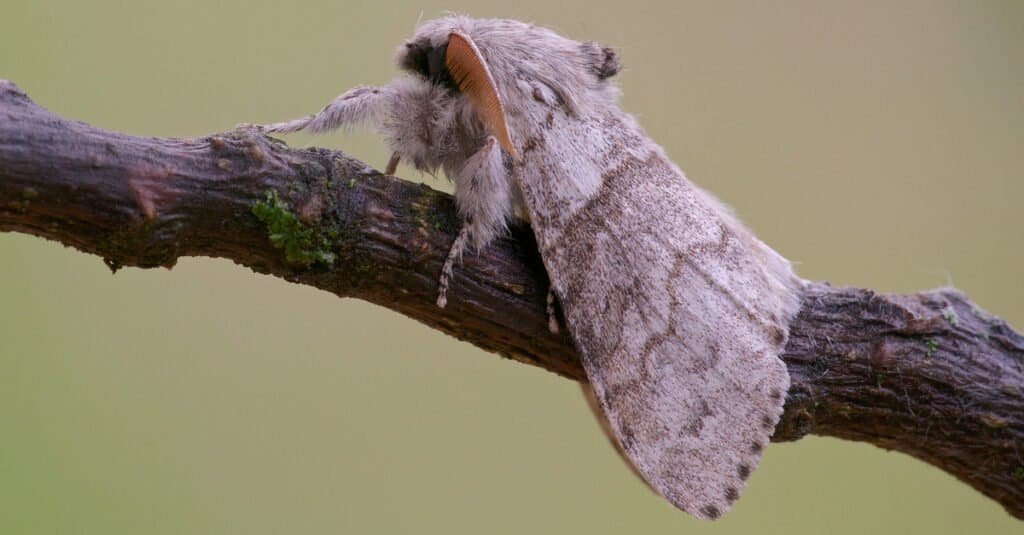
Rob Blanken/Shutterstock.com
The pale tussock moth (Calliteara pudibunda) is the first land brute to brand this list and for good reason. Like other moths, the pale tussock has a caterpillar and a concluding moth form, and both of these iterations of the moth look similar unlike plants. In caterpillar course, the pale tussock is brilliant green with tufts of spiked hairs on its back and a brightly colored head. This allows the moth to conceal itself in the gardens where it is oftentimes establish. In adult moth form, the furry dark-brown and gray wings and caput permit it to blend in with the bark of shade trees in its native regions of the United Kingdom and Republic of ireland.
#2 Animals That Await Like Plants: Sea Anemone

Ernie Cooper/Shutterstock.com
Some other marine invertebrate species that looks like a plant is the body of water anemone. These animals are often found on the seafloor or coral reefs in tropical waters. They use tentacles and venomous stingers to capture prey unaware and shovel them into their tubular mouths. Giving the appearance of a harmless flower, it's no surprise that venereal, fish, and plankton fall victim to a false sense of security around them. One larger species of anemone called the dahlia anemone (Urticina felina) is big enough to hunt starfish and jellyfish.
#ane Animals That Look Like Plants: Sea Fan

RLS Photograph/Shutterstock.com
Sea fans, sea whips, and sea pens are all related marine invertebrate species that bear a striking resemblance to plants. These species form colonies on the seafloor that branch out into sizes that can be many feet beyond. Some sea fan species can even be several feet high. 1 species of sea fan (Tauroprimnoa austasensis) that has merely recently been discovered makes its home in the frigid seas effectually Antarctica.
This is unique in that the majority of other ocean fan and ocean whip species are native to tropical temperature waters. Like the plants that they imitate, these animals utilize photosynthesis to obtain nutrients.
Upward Next: Check Out These x Animals That Molt
Source: https://a-z-animals.com/blog/these-10-animals-look-like-plants/
Posted by: gentilelovent.blogspot.com

0 Response to "What Is The Name Of The Animal That Looks Like A Leaf"
Post a Comment